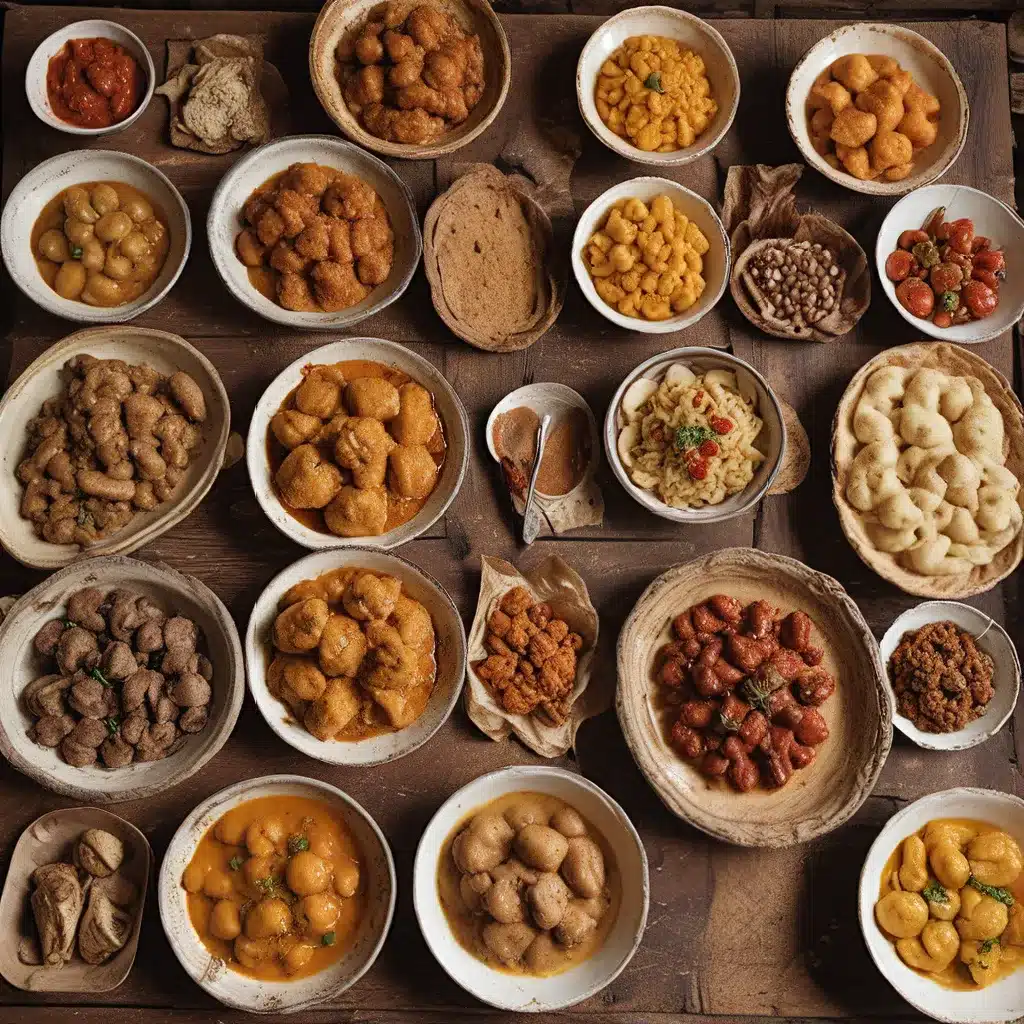
In the pursuit of unlocking the mysteries of ancient civilizations, archaeologists and historians have not only uncovered the physical remnants of long-lost cultures but have also gained fascinating insights into the culinary traditions that once graced the tables of our ancestors. From the sumptuous feasts of the Roman Empire to the intricate flavor profiles of medieval European cuisines, the rediscovery of these forgotten culinary delights has sparked a renewed appreciation for the rich gastronomic heritage of the past.
Unearthing the Flavors of the Roman Banquet
The grandeur of the Roman Empire is undeniable, and its culinary prowess was no exception. Excavations of ancient Roman sites have revealed a wealth of information about the sophisticated and indulgent dining practices of the elite. Remnants of exotic spices, rare fruits, and opulent serving vessels have painted a vivid picture of the lavish banquets that once graced the tables of the Roman aristocracy.
One particularly striking discovery was the Apicius, a collection of ancient Roman recipes that provide a glimpse into the complex and diverse flavors that were celebrated in the Roman culinary tradition. From the rich, savory dishes of the patrician class to the more rustic, hearty fare of the common people, these recipes offer a tantalizing glimpse into the culinary sophistication of the Roman world.
Rediscovering the Forgotten Flavors of Medieval Europe
While the opulence of Roman cuisine is well-documented, the culinary traditions of medieval Europe have long been shrouded in mystery. However, recent archaeological and historical research has shed new light on the diverse and innovative flavors that defined the medieval palate.
Excavations of medieval monasteries and manors have uncovered a wealth of information about the intricate and complex culinary practices of the time. The discovery of rare spices, exotic fruits, and intricate food preparation techniques has challenged the common perception of medieval cuisine as simple and monotonous.
One particularly fascinating aspect of medieval culinary culture was the incorporation of pies into both savory and sweet dishes. These elaborate and visually striking creations were not only a culinary delight but also a symbol of status and wealth. The rediscovery of these forgotten pie recipes has sparked a renewed interest in the sophisticated and innovative nature of medieval gastronomy.
Uncovering the Secrets of Ancient Chinese Cuisine
While the culinary traditions of the Western world have long been the focus of historical and archaeological exploration, the rich and diverse culinary heritage of ancient China has also been the subject of renewed interest and discovery.
Excavations of ancient Chinese tombs and imperial palaces have revealed a wealth of information about the intricate and highly developed culinary practices of the Chinese dynasties. From the complex flavor profiles of imperial banquet dishes to the innovative cooking techniques employed in everyday meals, these discoveries have challenged the misconceptions about the simplicity of ancient Chinese cuisine.
One particularly fascinating aspect of ancient Chinese culinary culture was the use of fermentation in the preservation and enhancement of flavors. The discovery of ancient fermentation vessels and recipes has shed light on the sophisticated and innovative nature of Chinese food preservation techniques, which played a crucial role in the development of the diverse and complex flavors that defined the Chinese culinary tradition.
Embracing the Culinary Lessons of the Past
As we continue to uncover and rediscover the forgotten culinary delights of ancient civilizations, it is clear that the rich and diverse flavors of the past hold valuable lessons for the present and future of global gastronomy.
By studying and understanding the innovative and sophisticated culinary practices of our ancestors, we can not only appreciate the cultural and historical significance of these forgotten flavors but also draw inspiration from them to elevate and reinvent our own culinary experiences.
Whether it’s the complex and indulgent flavors of the Roman Empire, the intricate and visually striking creations of medieval Europe, or the sophisticated and innovative techniques of ancient China, the rediscovery of these forgotten culinary delights has the power to transform the way we understand and engage with the rich tapestry of human gastronomic history.
By embracing the lessons of the past, we can continue to push the boundaries of culinary innovation and celebrate the diversity and complexity that have defined the human experience through the universal language of food.


